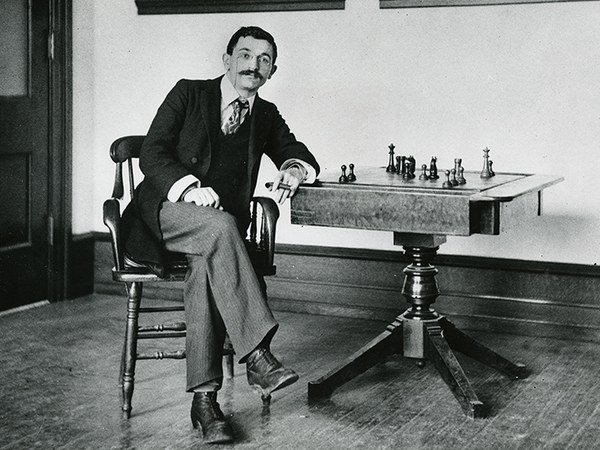


 “No chess event requires greater caution by historians than the Lasker v Schlechter match”, wrote Edward Winter in his excellent Chess Notes. Had the players agreed beforehand that the match would decide who gets the World Championship title? What were the exact conditions? Why did Schlechter play for a win in the last game despite being ahead on the scoreboard? Plenty of mysteries surround the confrontation that took place from January 7 to February 10, 1910 in Vienna and Berlin.
“No chess event requires greater caution by historians than the Lasker v Schlechter match”, wrote Edward Winter in his excellent Chess Notes. Had the players agreed beforehand that the match would decide who gets the World Championship title? What were the exact conditions? Why did Schlechter play for a win in the last game despite being ahead on the scoreboard? Plenty of mysteries surround the confrontation that took place from January 7 to February 10, 1910 in Vienna and Berlin.
Nevertheless, the riddle that we presented our readers has to do with game 5. The players reached an endgame which finished with Lasker’s king unable to find a way to escape. But how many mistakes did Lasker make in the meantime?
The answer? Lasker was even winning at some point in the endgame!
Once again, Zoran Petronijevic sent in the best solution:
 This old game was analyzed by a lot of great players (let’s mention some: Lasker, Schlechter, Tarrasch, Capablanca, Romanovsky, Huebner, Dvoretsky, Mueller, Kasparov...). However, there are still dark holes in it. This game was analyzed for the last time by Garry Kasparov (in his “Great Predecessors” Part I, second edition, Moscow 2020), and I think that he missed some main points at times. This means that the game is exceptionally complex, but at the same time it is a nice one! (“Only hard things can be nice at the same time” - Spinoza).
This old game was analyzed by a lot of great players (let’s mention some: Lasker, Schlechter, Tarrasch, Capablanca, Romanovsky, Huebner, Dvoretsky, Mueller, Kasparov...). However, there are still dark holes in it. This game was analyzed for the last time by Garry Kasparov (in his “Great Predecessors” Part I, second edition, Moscow 2020), and I think that he missed some main points at times. This means that the game is exceptionally complex, but at the same time it is a nice one! (“Only hard things can be nice at the same time” - Spinoza).
The main points are:
In any case, besides some improvements in sidelines, the main question is: is Black winning after 52..Qe5 and Qd5? My analyses show that yes, he is. Let’s see what further discoveries are made by other analysts.
In our replay board above there are a large number of functions you can use to really understand the game and the analysis. Recently we published a comprehensive tutorial plus video instructions which tells you about all the powerful features and buttons that make the ChessBase's replay one of the best replay experiences around.
One big advantage is that you can start an engine (fan icon) that will help you to analyse. You can get multiple lines of analysis by clicking the + button to the right of the engine analysis window. The "!" key, incidentally, shows you the threat in any position, which is incredibly useful in the case of unclear moves.
 There is one more thing you can do. It is a lot of fun, but also a serious challenge: Click on the rook icon below the notation window. This will allow you the play the above position against Fritz, at your level of playing strength (e.g. "Club Player"), right here on the news page. Note that your analysis, in which you can delete, move or promote lines, is stored in the notation as new variations. In the end you will find the game with your analysis in the cloud. So nothing is ever lost.
There is one more thing you can do. It is a lot of fun, but also a serious challenge: Click on the rook icon below the notation window. This will allow you the play the above position against Fritz, at your level of playing strength (e.g. "Club Player"), right here on the news page. Note that your analysis, in which you can delete, move or promote lines, is stored in the notation as new variations. In the end you will find the game with your analysis in the cloud. So nothing is ever lost.